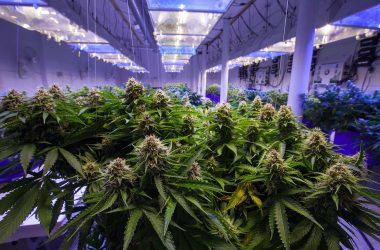Heparin prevents blood clotting and is utilized in many surgical procedures
Luca Medical / Alamy
A broadly used anti-clotting drug referred to as heparin is at the moment obtained from the intestines of a trillion pigs a year, which suggests there’s a danger of unintended or deliberate contamination, in addition to infections. Now, a option to make it synthetically might remove most of those dangers.
“We expect it might be offered inside the subsequent 4 to 5 years, perhaps even much less,” says Jonathan Dordick on the Rensselaer Polytechnic Institute in New York, whose crew has developed a course of for producing heparin from scratch.
The drug was found in 1916 and has been used for the reason that Thirties to forestall blood clotting. It’s used to deal with a variety of situations, in addition to throughout kidney dialysis and lots of sorts of surgical procedure.
The massive benefit of heparin is that even giant doses might be given safely. “It’s very tough to have a dose that’s an excessive amount of,” says Dordick. And if somebody does get an excessive amount of, one other drug can reverse its results.
Against this, different anti-clotting brokers, akin to warfarin, might be deadly if an excessive amount of is given and there’s no antidote, he says, which is why warfarin is used as a rat poison.
The massive drawback of heparin is that, not like most medication, it isn’t a single, small molecule, however a various combination of huge chains of sugars. “Heparin doesn’t have a particular measurement and it doesn’t have a particular construction,” says Dordick. Complicated sugars are onerous to fabricate, which is why heparin is derived from pigs.
Ideally, animal-derived medication could be sourced from small herds saved in isolation to forestall viral infections. However as a result of so many pig intestines must be processed to extract the 100 tonnes of heparin used worldwide every year, the one option to get sufficient intestines is to take them from regular pig farms, with most heparin coming from China as it’s the largest pork producer.
Because of this, the preliminary stage in heparin’s manufacturing is unregulated as a result of drug manufacturing requirements can’t be utilized to regular farms. There’s a danger of unintended contamination or the deliberate addition of counterfeit heparin-like substances to spice up income. Within the worst incident in 2008, round 800 individuals within the US had antagonistic reactions and at the least 81 died. This danger stays, says Dordick. “It’s at all times potential.”
With any animal-derived product, there’s additionally a danger that individuals might get situations attributable to viruses or pathogenic brokers referred to as prions, regardless of precautions being taken to forestall this. Nevertheless, Dordick says there are not any identified circumstances of this taking place with heparin.
The reliance on pigs has additionally led to shortages when pig farms have been affected by situations akin to swine fever. Some individuals even have moral or non secular objections to utilizing a pig-derived product.
Artificial heparin would due to this fact have many benefits, however producing it has proved extraordinarily tough. The primary problem is making the branched sugar chains that type its spine. Subsequent, numerous extra modifications are made to the chains by 4 enzymes, which should be carried out in a exact sequence.
After a few years of labor, Dordick’s crew has now licensed the method it developed to a pharmaceutical firm to scale up for business manufacture. One of the time-consuming features was isolating and manufacturing the enzymes concerned, says Dordick.
The crew has managed to scale up manufacturing a millionfold because it first produced just a few micrograms twenty years in the past, says Kuberan Balagurunathan on the College of Utah, who was concerned on this early work however is now not a part of the crew. “The subsequent predominant problem could be to extend the size one other millionfold, from grams to metric tonnes,” he says.
Balagurunathan thinks that is achievable with adequate funding. “I count on that artificial heparin will exchange animal heparin in a fashion much like recombinant insulin changing bovine and porcine insulins.”
However Jian Liu on the College of North Carolina at Chapel Hill isn’t so certain. “Whether or not this course of might be transformed to hold out hundreds of kilogram-scale syntheses stays to be seen.”
A lot of different corporations are working to supply artificial heparin, says Balagurunathan, however due to business secrecy, it’s onerous to guage their progress.
Matters:












